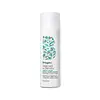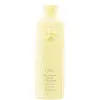What's inside
What's inside
 Key Ingredients
Key Ingredients

 Benefits
Benefits

 Concerns
Concerns

 Ingredients Side-by-side
Ingredients Side-by-side

Water
Skin ConditioningSodium Cocoyl Isethionate
CleansingLauramidopropyl Betaine
CleansingGlycerin
HumectantSodium C14-16 Olefin Sulfonate
CleansingCocamidopropyl Hydroxysultaine
CleansingCoffea Arabica Seed Oil
MaskingCopper Tripeptide-34
Skin ConditioningPanax Ginseng Root Extract
EmollientBiotin
AntiseborrhoeicCoconut Acid
CleansingLeuconostoc/Radish Root Ferment Filtrate
AntimicrobialSodium Methyl Cocoyl Taurate
CleansingSodium Isethionate
CleansingCitric Acid
BufferingAloe Barbadensis Leaf Juice
Skin ConditioningCaffeine
Skin ConditioningPropanediol
SolventLindera Strychnifolia Root Extract
Skin ConditioningTocopheryl Acetate
AntioxidantUbiquinone
AntioxidantGlycine
BufferingLarix Europaea Wood Extract
HumectantSodium Metabisulfite
AntioxidantCamellia Sinensis Leaf Extract
AntimicrobialZinc Chloride
AntimicrobialSodium Hydroxide
BufferingParfum
MaskingCaprylhydroxamic Acid
Benzyl Alcohol
PerfumingWater, Sodium Cocoyl Isethionate, Lauramidopropyl Betaine, Glycerin, Sodium C14-16 Olefin Sulfonate, Cocamidopropyl Hydroxysultaine, Coffea Arabica Seed Oil, Copper Tripeptide-34, Panax Ginseng Root Extract, Biotin, Coconut Acid, Leuconostoc/Radish Root Ferment Filtrate, Sodium Methyl Cocoyl Taurate, Sodium Isethionate, Citric Acid, Aloe Barbadensis Leaf Juice, Caffeine, Propanediol, Lindera Strychnifolia Root Extract, Tocopheryl Acetate, Ubiquinone, Glycine, Larix Europaea Wood Extract, Sodium Metabisulfite, Camellia Sinensis Leaf Extract, Zinc Chloride, Sodium Hydroxide, Parfum, Caprylhydroxamic Acid, Benzyl Alcohol
Water
Skin ConditioningPentylene Glycol
Skin ConditioningDimethicone
EmollientSalvia Hispanica Seed Extract
EmollientPPG-3 Benzyl Ether Myristate
EmollientCetyl Alcohol
EmollientDimethiconol Meadowfoamate
EmollientBrassica Alcohol
EmollientParfum
MaskingPolyquaternium-37
Guar Hydroxypropyltrimonium Chloride
Skin ConditioningBehentrimonium Chloride
PreservativeCaprylyl Methicone
Skin ConditioningBenzyl Alcohol
PerfumingBrassicyl Valinate Esylate
EmollientGlycerin
HumectantPanthenol
Skin ConditioningChlorphenesin
AntimicrobialSodium Benzoate
MaskingCalcium Gluconate
HumectantTrehalose
HumectantXylitol
HumectantButylene Glycol
HumectantHydrolyzed Rice Protein
Skin ConditioningCitric Acid
BufferingPolyquaternium-73
Caprylyl/Capryl Glucoside
CleansingIsopropyl Alcohol
SolventOryza Sativa Bran Extract
Skin ConditioningPanthenyl Hydroxypropyl Steardimonium Chloride
Quaternium-95
UV AbsorberTetrasodium Glutamate Diacetate
Ethyl Linoleate
EmollientCeramide NP
Skin ConditioningEthyl Oleate
EmollientSorbitan Oleate
EmulsifyingLeuconostoc/Radish Root Ferment Filtrate
AntimicrobialSodium PCA
HumectantCinnamidopropyltrimonium Chloride
Arctium Lappa Root Extract
Skin ConditioningHedera Helix Extract
AntimicrobialSodium Lactate
BufferingTrigonella Foenum-Graecum Seed Extract
PerfumingPropanediol
SolventSodium Phosphate
BufferingLactobacillus/Arundinaria Gigantea Leaf Ferment Filtrate
Skin ConditioningArginine
MaskingHelianthus Annuus Extract
EmollientAspartic Acid
MaskingPCA
HumectantLitchi Chinensis Fruit Extract
Skin ConditioningCitrullus Lanatus Seed Oil
EmollientPhenoxyethanol
PreservativeCaprylic Acid
CleansingGalactoarabinan
Tocopherol
AntioxidantRosmarinus Officinalis Leaf Extract
AntimicrobialLeontopodium Alpinum Extract
Skin ConditioningHydrolyzed Vegetable Protein Pg-Propyl Silanetriol
Skin ConditioningGlycine
BufferingAlanine
MaskingPotassium Sorbate
PreservativeSodium Acetylated Hyaluronate
HumectantCamellia Sinensis Leaf Extract
AntimicrobialSodium Hyaluronate
HumectantSerine
MaskingValine
MaskingEthylhexylglycerin
Skin ConditioningGossypium Herbaceum Seed Extract
Skin ConditioningPentaerythrityl Tetra-Di-T-Butyl Hydroxyhydrocinnamate
AntioxidantSodium Hyaluronate Crosspolymer
HumectantSodium Hydroxide
BufferingIsoleucine
Skin ConditioningProline
Skin ConditioningThreonine
Nigella Sativa Seed Extract
PerfumingHydrolyzed Sodium Hyaluronate
Skin ConditioningHistidine
HumectantPhenylalanine
MaskingCaprylyl Glycol
EmollientDisodium EDTA
Potassium Hydroxide
BufferingLimonene
PerfumingHexyl Cinnamal
PerfumingCitral
PerfumingLinalool
PerfumingWater, Pentylene Glycol, Dimethicone, Salvia Hispanica Seed Extract, PPG-3 Benzyl Ether Myristate, Cetyl Alcohol, Dimethiconol Meadowfoamate, Brassica Alcohol, Parfum, Polyquaternium-37, Guar Hydroxypropyltrimonium Chloride, Behentrimonium Chloride, Caprylyl Methicone, Benzyl Alcohol, Brassicyl Valinate Esylate, Glycerin, Panthenol, Chlorphenesin, Sodium Benzoate, Calcium Gluconate, Trehalose, Xylitol, Butylene Glycol, Hydrolyzed Rice Protein, Citric Acid, Polyquaternium-73, Caprylyl/Capryl Glucoside, Isopropyl Alcohol, Oryza Sativa Bran Extract, Panthenyl Hydroxypropyl Steardimonium Chloride, Quaternium-95, Tetrasodium Glutamate Diacetate, Ethyl Linoleate, Ceramide NP, Ethyl Oleate, Sorbitan Oleate, Leuconostoc/Radish Root Ferment Filtrate, Sodium PCA, Cinnamidopropyltrimonium Chloride, Arctium Lappa Root Extract, Hedera Helix Extract, Sodium Lactate, Trigonella Foenum-Graecum Seed Extract, Propanediol, Sodium Phosphate, Lactobacillus/Arundinaria Gigantea Leaf Ferment Filtrate, Arginine, Helianthus Annuus Extract, Aspartic Acid, PCA, Litchi Chinensis Fruit Extract, Citrullus Lanatus Seed Oil, Phenoxyethanol, Caprylic Acid, Galactoarabinan, Tocopherol, Rosmarinus Officinalis Leaf Extract, Leontopodium Alpinum Extract, Hydrolyzed Vegetable Protein Pg-Propyl Silanetriol, Glycine, Alanine, Potassium Sorbate, Sodium Acetylated Hyaluronate, Camellia Sinensis Leaf Extract, Sodium Hyaluronate, Serine, Valine, Ethylhexylglycerin, Gossypium Herbaceum Seed Extract, Pentaerythrityl Tetra-Di-T-Butyl Hydroxyhydrocinnamate, Sodium Hyaluronate Crosspolymer, Sodium Hydroxide, Isoleucine, Proline, Threonine, Nigella Sativa Seed Extract, Hydrolyzed Sodium Hyaluronate, Histidine, Phenylalanine, Caprylyl Glycol, Disodium EDTA, Potassium Hydroxide, Limonene, Hexyl Cinnamal, Citral, Linalool
Ingredients Explained
These ingredients are found in both products.
Ingredients higher up in an ingredient list are typically present in a larger amount.
Benzyl Alcohol is most commonly used as a preservative. It also has a subtle, sweet smell. Small amounts of Benzyl Alcohol is not irritating and safe to use in skincare products. Most Benzyl Alcohol is derived from fruits such as apricots.
Benzyl Alcohol has both antibacterial and antioxidant properties. These properties help lengthen the shelf life of products. Benzyl Alcohol is a solvent and helps dissolve other ingredients. It can also improve the texture and spreadability.
Alcohol comes in many different forms. Different types of alcohol will have different effects on skin. This ingredient is an astringent alcohol.
Using high concentrations of these alcohols are drying on the skin. They may strip away your skin's natural oils and even damage your skin barrier. Astringent alcohols may also irritate skin.
Other types of astringent alcohols include:
According to the National Rosacea Society based in the US, you should be mindful of products with these alcohols in the top half of ingredients.
Any type of sanitizing product will have high amounts of alcohol to help kill bacteria and viruses.
Learn more about Benzyl AlcoholCamellia Sinensis Leaf Extract is derived from the leaves of the tea plant. Black tea, green tea, and oolong tea are all harvested from this plant.
This ingredient has many skin benefits:
This ingredient contains polyphenols, a strong antioxidant. Antioxidants help fight off molecules that damage skin cells.
On top of that, the antioxidants in green tea neutralize free-radicals from the sun. This gives the skin some extra UV protection, but should not replace sunscreen.
Many components of tea have anti-inflammatory properties.
Polyphenols and L-theanine help soothe the skin and reduce irritation. The caffeine in Camellia Sinensis Leaf Extract helps calm inflamed blood vessels.
Other compounds found in tea include: Vitamin Bs, linoleic acid, magnesium, calcium, iron, and zinc.
Research has shown both drinking Camellia Sinensis Leaf Tea and applying it to the skin can help boost skin elasticity and hydration. Studies also show using tea extract may reduce sebum, or oil, production.
Learn more about Camellia Sinensis Leaf ExtractCitric Acid is an alpha hydroxy acid (AHA) naturally found in citrus fruits like oranges, lemons, and limes.
Like other AHAs, citric acid can exfoliate skin by breaking down the bonds that hold dead skin cells together. This helps reveal smoother and brighter skin underneath.
However, this exfoliating effect only happens at high concentrations (20%) which can be hard to find in cosmetic products.
Due to this, citric acid is usually included in small amounts as a pH adjuster. This helps keep products slightly more acidic and compatible with skin's natural pH.
In skincare formulas, citric acid can:
While it can provide some skin benefits, research shows lactic acid and glycolic acid are generally more effective and less irritating exfoliants.
Most citric acid used in skincare today is made by fermenting sugars (usually from molasses). This synthetic version is identical to the natural citrus form but easier to stabilize and use in formulations.
Read more about some other popular AHA's here:
Learn more about Citric AcidGlycerin is already naturally found in your skin. It helps moisturize and protect your skin.
A study from 2016 found glycerin to be more effective as a humectant than AHAs and hyaluronic acid.
As a humectant, it helps the skin stay hydrated by pulling moisture to your skin. The low molecular weight of glycerin allows it to pull moisture into the deeper layers of your skin.
Hydrated skin improves your skin barrier; Your skin barrier helps protect against irritants and bacteria.
Glycerin has also been found to have antimicrobial and antiviral properties. Due to these properties, glycerin is often used in wound and burn treatments.
In cosmetics, glycerin is usually derived from plants such as soybean or palm. However, it can also be sourced from animals, such as tallow or animal fat.
This ingredient is organic, colorless, odorless, and non-toxic.
Glycerin is the name for this ingredient in American English. British English uses Glycerol/Glycerine.
Learn more about GlycerinThis ingredient is an amino acid that helps build proteins and moisturizes skin. It is already present in our skin as our bodies produce them naturally.
Glycine already plays a role in helping keep our skin moisturized as amino acids transport moisture throughout our skin.
As collagen is made up of glycine and other amino acids, it is believed glycine may help our skin produce more collagen.
Learn more about GlycineLeuconostoc/Radish Root Ferment Filtrate is a natural preservative. It comes from fermenting radish roots with a bacteria called leuconostoc.
Leuconostoc comes from lactic acid.
This ingredient has antimicrobial properties and helps prevent the growth of bacteria in a product.
Leuconostoc is used to make the traditional Korean side-dish, kimchi. It is also used to make sourdough bread (both incredibly yummy foods).
Learn more about Leuconostoc/Radish Root Ferment FiltrateParfum is a catch-all term for an ingredient or more that is used to give a scent to products.
Also called "fragrance", this ingredient can be a blend of hundreds of chemicals or plant oils. This means every product with "fragrance" or "parfum" in the ingredients list is a different mixture.
For instance, Habanolide is a proprietary trade name for a specific aroma chemical. When used as a fragrance ingredient in cosmetics, most aroma chemicals fall under the broad labeling category of “FRAGRANCE” or “PARFUM” according to EU and US regulations.
The term 'parfum' or 'fragrance' is not regulated in many countries. In many cases, it is up to the brand to define this term.
For instance, many brands choose to label themselves as "fragrance-free" because they are not using synthetic fragrances. However, their products may still contain ingredients such as essential oils that are considered a fragrance by INCI standards.
One example is Calendula flower extract. Calendula is an essential oil that still imparts a scent or 'fragrance'.
Depending on the blend, the ingredients in the mixture can cause allergies and sensitivities on the skin. Some ingredients that are known EU allergens include linalool and citronellol.
Parfum can also be used to mask or cover an unpleasant scent.
The bottom line is: not all fragrances/parfum/ingredients are created equally. If you are worried about fragrances, we recommend taking a closer look at an ingredient. And of course, we always recommend speaking with a professional.
Learn more about ParfumPropanediol is an all-star ingredient. It softens, hydrates, and smooths the skin.
It’s often used to:
Propanediol is not likely to cause sensitivity and considered safe to use. It is derived from corn or petroleum with a clear color and no scent.
Learn more about PropanediolSodium Hydroxide is also known as lye or caustic soda. It is used to adjust the pH of products; many ingredients require a specific pH to be effective.
In small amounts, sodium hydroxide is considered safe to use. However, large amounts may cause chemical burns due to its high alkaline.
Your skin has a natural pH and acid mantle. This acid mantle helps prevent harmful bacteria from breaking through. The acid mantle also helps keep your skin hydrated.
"Alkaline" refers to a high pH level. A low pH level would be considered acidic.
Learn more about Sodium HydroxideWater. It's the most common cosmetic ingredient of all. You'll usually see it at the top of ingredient lists, meaning that it makes up the largest part of the product.
So why is it so popular? Water most often acts as a solvent - this means that it helps dissolve other ingredients into the formulation.
You'll also recognize water as that liquid we all need to stay alive. If you see this, drink a glass of water. Stay hydrated!
Learn more about Water